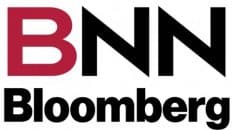In most parts of the country, this summer has been a hot one. In fact, heatwaves, droughts, and fires topped headlines across the globe. And as I understand it, the higher and longer the temperature goes, the less cognizant we are of cognizing!
This is evident when we look at the latest comments of who I like to call, the “OPECian Carteliods,” also known as Saudi Arabia. In a moment of frustration, OPEC is opining that there is no longer a relation between the crude oil futures market price and the fundamentals of supply and demand.
They say, and I paraphrase, when the price of crude swings $13/bbl., as it has so far this month, “The solution to this problem is to call a meeting! Tighten supply!”
And there you go, all fixed!
Well, they may not have to call that meeting because, as our own leader once famously said, “Don’t worry, the budget will balance itself.”
So, don’t worry OPEC, be happy. The fundamentals of supply and demand will also balance themselves. This balance may come sooner than the consumer wants because fall and winter are coming our way.
To catch my drift, take a squint at the latest data from the EIA:
Crude oil inventories have fallen again, this time by 3.3 million barrels – now 6% below the 5-year average. This is despite drawing crude from the Strategic Petroleum Reserve to lower pump prices. The draw is now at 168 million barrels since President Joe Biden announced this price fixing strategy.
It is important to note that this ends on December 1; and this alone will increase crude prices, so better delay that meeting.
Next, we have the European sanctions on all Russian crude and refined products scheduled to come into effect in and around the same date. This is added to the whole domino effect for higher crude and refined products prices, not only for the EU community, but more sensitively, here in the U.S. and Canada.
In fact, support for higher prices may already be in place. Just last week the U.S. exported 11 million barrels per day of crude and diesel to Europe, which is the highest rate of exports since 1991.
This has left the U.S. inventories of distillates 24% below the 5-year average.
Exports will continue to keep up with overseas demand and will not subside as we enter the winter months. The higher the demand, the higher the price, and U.S. refiners will always go for the higher export price option. But with fall upon us and winter close behind, there is no way that refiners will be able to make up a 24% shortfall in supply.
Can you already hear the footsteps of possible record high diesel and jet fuel prices?
At this time of year, we are entering the shoulder period of lower demand for both gasoline and distillates. Normally, this means the wholesale prices for gasoline and diesel are about the same.
But the lower distillate inventories and high exports of diesel have created a monster of a problem: diesel wholesale rack prices are higher than gasoline by 45 cents per litre in the east, and 56 cents per litre on the Prairies.
Summer may be cooling down, but the heat on consumer prices will get cranked up, and it could get very uncomfortable.
– Roger McKnight – B.Sc., Senior Petroleum Analyst








Add comment